Surge Protection Hall of Fame
January 2013
Donald E Raudabaugh
Responsible for the Polymer Housed
Arrester Paradigm Shift
 In the last 25 years, there has been one significant surge protection paradigm shift, "The Polymer Housed Arrester".
Donald E Raudabaugh of the Ohio Brass Company can be credited with leading the way. His seminal patent that
described how to mechanically hold electrical disks in place so that a low strength rubber housing could be used was
issued in 1987. Without this new concept that transferred the mechanical strength of the arrester from the housing to a
new component called a wrapped module, the polymer housed era would not have started as soon as it did. Today nearly all
arresters are housed in polymer material as opposed to ceramic material.
In the last 25 years, there has been one significant surge protection paradigm shift, "The Polymer Housed Arrester".
Donald E Raudabaugh of the Ohio Brass Company can be credited with leading the way. His seminal patent that
described how to mechanically hold electrical disks in place so that a low strength rubber housing could be used was
issued in 1987. Without this new concept that transferred the mechanical strength of the arrester from the housing to a
new component called a wrapped module, the polymer housed era would not have started as soon as it did. Today nearly all
arresters are housed in polymer material as opposed to ceramic material.
Complete Hall of Fame Citation
January 2012
David W Jackson
Developer of Rotating Machinery
Surge Protection Application Guide
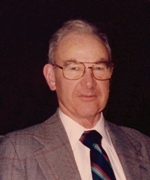 After serving in WWII Dave Jackson's electrical engineering career spanned 61 years. His first job in 1946 was
as a drafter at Jackson and Moreland, the consulting firm his grandfather had founded. In 1960
he attended his first Surge Protective Devices meeting and continued with the committee for
47 years. He was involved in the protection of rotating machinery during his entire SPD career.
In 2003 he saw the fruit of his labor achieved with the publication of "IEEE Guide for the
Application of Surge Voltage Protective Equipment on AC Rotating Machinery 1000 V and Greater."
After serving in WWII Dave Jackson's electrical engineering career spanned 61 years. His first job in 1946 was
as a drafter at Jackson and Moreland, the consulting firm his grandfather had founded. In 1960
he attended his first Surge Protective Devices meeting and continued with the committee for
47 years. He was involved in the protection of rotating machinery during his entire SPD career.
In 2003 he saw the fruit of his labor achieved with the publication of "IEEE Guide for the
Application of Surge Voltage Protective Equipment on AC Rotating Machinery 1000 V and Greater."
Complete Hall of Fame Citation
June 2009
Rodney M Doone
Inventor of the External Multi-column Arrester
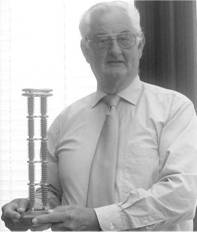 Rod Doone, a long time arrester expert in the UK is best known as the inventor of the External multi-column
arrester that has grown in popularity especially in the very high voltage range. Rod was issued patent 5,218,508
in 1993 which he had applied for in 1990. Using disks in parallel was not a new concept, but putting them outside a
single housing was quite unique. Not only did it allow for smaller diameter disks to be used for higher class applications,
but it also reduced the size of the grading ring required for similar voltage rated arresters. When the columns are arranged
in a triangular form, they also provide increased strength over similar height arresters.
Rod Doone, a long time arrester expert in the UK is best known as the inventor of the External multi-column
arrester that has grown in popularity especially in the very high voltage range. Rod was issued patent 5,218,508
in 1993 which he had applied for in 1990. Using disks in parallel was not a new concept, but putting them outside a
single housing was quite unique. Not only did it allow for smaller diameter disks to be used for higher class applications,
but it also reduced the size of the grading ring required for similar voltage rated arresters. When the columns are arranged
in a triangular form, they also provide increased strength over similar height arresters.
Also credited to Rod Doone is an early polymer housed arrester patent filed in 1986 and granted in 1989.
Complete Hall of Fame Citation
April 2009
John W. Kalb
Inventor of the Arrester Current-limiting Gap
 Jack Kalb, as he is known to his friends, was an extraordinary arrester design engineer and surge
protection pioneer. At 90+ years old, he is still active but not in arresters any longer.
He just sold his candle making business after 25 years and resides on St. Simons Island, Georgia USA.
He was kind enough to submit an excellent recollection of his arrester career.
Jack Kalb, as he is known to his friends, was an extraordinary arrester design engineer and surge
protection pioneer. At 90+ years old, he is still active but not in arresters any longer.
He just sold his candle making business after 25 years and resides on St. Simons Island, Georgia USA.
He was kind enough to submit an excellent recollection of his arrester career.
When he retired from Ohio Brass in 1981 he had been involved in surge arrester design for over 40 years
with more than 11 US patents on arresters in his name. Jack is recognized as the inventor of the surge
arrester current-limiting gap. This invention moved the surge arrester protection capabilities to the
next level in surge protection in the early 1960's. US patent 3,019,367 filed in Jan 1957 and granted
in Jan 1962 was the first patent to describe the Arrester Current-Limiting Gap Concept. In August 1959
Jack's AIEE paper titled "New Current-Limiting Gap Extends Valve-Type Lightning-Arrester Performance",
co-authored by AG Yost, also of Ohio Brass, introduced the world to the new concept of current
limiting gaps. This new invention allowed for lower resistance valve blocks that translated in to
improved protective levels on arresters. This invention replaced the magnetic field controlled arc
gap design that had been used for the decade before the current-limiting gap was introduced. This
invention is also credited with improving surge protection around the world.
Besides his current-limiting gap experience, Jack designed an expulsion arrester in the 1940's and
lead the Ohio Brass team with the introduction of its first MOV type arrester.
Career, Awards and Honors
- 1940 - Graduate of Swarthmore College, Swarthmore Pa.
- 1940 - Started his Career at GE
- 1949 - Joined Ohio Brass
- 1957 - Invented Current-limiting Gap for Arresters
- 1958 - Named Director of R&D, Ohio Brass
- 1959 - IEEE Fellow
- 1980 - Elected to the National Academy of Engineering of the US.
- 1981 - Retired from arrester business
- 4 - IEEE Prize Papers
- 11 - US patents 1949-1970
In the April 2009 Hall of Fame Citation, read the story of his career in his own words as written in a letter to ArresterWorks in April 2009.
March 2009
Professor Mat Darveniza
Professor, Standards Bearer, Author
And Overvoltage Protection Expert
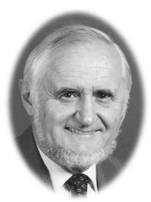 Professor Darveniza is inarguably the most famous lightning protection expert to ever hail from
Australia. His papers and teachings are world renowned. His creativity in testing and evaluating
equipment is unparalleled. At age 77 he is still going strong and remains active in many aspects of
overvoltage protection and teaching.
Professor Darveniza is inarguably the most famous lightning protection expert to ever hail from
Australia. His papers and teachings are world renowned. His creativity in testing and evaluating
equipment is unparalleled. At age 77 he is still going strong and remains active in many aspects of
overvoltage protection and teaching.
On Australia Day 2003, Emeritus Professor Darveniza was appointed an Officer of the General Division
of the Order of Australia (AO citation - "for service to electrical engineering, particularly through
research on lightning protection of electrical equipment and as Chairman of Standards Australia
committee on lightning protection of structures and to professional education").
Also in 2003, he received the Centenary Medal awarded by the Governor-General in the category of the
General List (citation - "for service to Australian society in electrical engineering and education").
In December 2004, the Queensland Government appointed him Director ENERGEX Board.
In 2008, he was elected to the IEAust Qld Division Hall of Fame.
Complete Citation
February 2009
John Posey
Standards Champion and
Lifelong High Voltage Arrester Expert
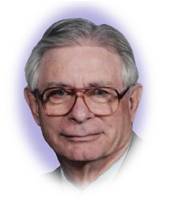 Besides being a valuable asset to the surge protection industry and an extraordinary arrester resource
for many of us, John Posey can spot a spelling or grammar error from 10,000 feet even if the document
is facing away from him. His involvement in standards before his retirement 15 years ago was very much
appreciated by the generation of standards writers that followed him. As you can see from his resume,
he spent his entire career with one company, Ohio Brass. An accomplishment worth mentioning in this
day of job jumping by highly qualified and respected individuals. Even after retirement he continued
to represent his lifelong employer for 13 more years in standards.
Besides being a valuable asset to the surge protection industry and an extraordinary arrester resource
for many of us, John Posey can spot a spelling or grammar error from 10,000 feet even if the document
is facing away from him. His involvement in standards before his retirement 15 years ago was very much
appreciated by the generation of standards writers that followed him. As you can see from his resume,
he spent his entire career with one company, Ohio Brass. An accomplishment worth mentioning in this
day of job jumping by highly qualified and respected individuals. Even after retirement he continued
to represent his lifelong employer for 13 more years in standards.
Words of Wisdom for Future Arrester Designers
Prepare for changes in technology and in peoples goals. The world will change and you can help make
it happen.
Career
John received his B.S. in Electrical Engineering from Purdue University in 1950 and started his lifelong
association with Ohio Brass Company as an engineer in the high-voltage laboratory. One of his first
assignments was to design and construct an automatic 60 Hz sparkover test machine for the new line of
surge arresters introduced that year by OB.
He served as the guidance radar operator for the Terrier missile project at the White Sands Missile Range
during the Korean War from 1951 to 1953.
Upon discharge from the Army he returned to OB as a sales and application engineer for all utility products.
He became Product Manager for surge arresters in 1968 and this product became his primary focus for the
next 25 years. During his career he arranged and participated in many arrester seminars in South America,
South Africa, Canada, Mexico and in the US. He was the standards coordinator for the IEEE SPDC for over
ten years, English Editor of the IEC standard, and a mentor.
Active in national and international safety standards development, he was past chairman of the Codes and
Standards Committee of NEMA (National Electrical Manufacturers Association), member of the IEEE Standards
Board, and had received the IEEE Standards Medallion, NEMA Kite and Key award and the ANSI (American
National Standards Institute) Meritorious Service Award.
He retired from Ohio Brass Company (Hubbell Power Systems) in 1993 as Marketing Manager but continued as a
standards consultant to Hubbell until 2006.
Full Citation
January 2009
Donald Worden
Standards Champion, Designer and Marketer of Low Voltage SPDs
Don Worden was a master at guiding standards development in the IEEE SPD. His leadership is
matched by very few. When he retired from standards leadership 5 years ago, he left a legacy of published
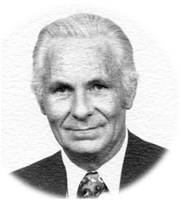 standards that may never be matched. Besides Dons tireless leadership to publish useful standards, there
are very few people that can use humor as well as he. To this day, he can start and end each public speaking
event with a line that will put you in the right mental state to listen and remember what he has said. A very
useful tool in communications.
standards that may never be matched. Besides Dons tireless leadership to publish useful standards, there
are very few people that can use humor as well as he. To this day, he can start and end each public speaking
event with a line that will put you in the right mental state to listen and remember what he has said. A very
useful tool in communications.
Don's career includes design and installation of industrial facility and broadcast station low voltage power
distribution systems; aircraft ground power units; development of electromechanical devices and
instrumentation for aircraft, missile, and industrial systems. In 1970 he discovered surge protection and along
with that, a lifelong passion. The following 30 years focused on development, application and marketing of
surge protection to resolve a wide spectrum of reliability needs and operational problems in low voltage
power, communications, data, signaling and control circuits. Don says "All of it was interesting; most of
it was fun."
Words of Wisdom for future surge protection engineers
Find work that you enjoy and give it your full attention. Choose projects for which you have passion, even in
difficult periods. Set realistic and measurable goals; evaluate your performance. Do not be afraid to innovate;
progress frequently entails some risk. Learn from your accomplishments and your mistakes; never stop learning.
Honesty, humor and hard work will contribute significantly to your success.
Work for the benefit of all parties - in the long run, you will gain more than you give in knowledge, personal
satisfaction and friendships.
Note: Standards development and company projects have no room for those who participate
solely to gain an advantage over their competition.
Full Hall of Fame Citation
December 2008
Professor Asle Schei
Engineer, Professor, Inventor and Founder of TransiNor
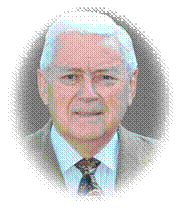 Asle Schei is a person known well in the IEC and CIGRE circles where he participated, lead and convened
working groups for nearly 30 years. His most recent position in arrester standards was as Convenor of the
now MT4 until 1995 which was responsible for all IEC medium and high voltage arrester standards of
significance at that time.
Asle Schei is a person known well in the IEC and CIGRE circles where he participated, lead and convened
working groups for nearly 30 years. His most recent position in arrester standards was as Convenor of the
now MT4 until 1995 which was responsible for all IEC medium and high voltage arrester standards of
significance at that time.
Because his career spanned so many accomplishments, it is difficult to point at one as his most significant,
but the founding of TransiNor along with two others entrepreneurs has to be close to the top of the list.
As the managing director of the business from 1986 to 1995, he led its effort to introduce a technically
superior arrester condition monitor that is still on the market today. The company specialized in transient
analysis and related fields. TransiNor was purchased by the Dobel Company in 2001.
Professor Schei offers these "Words of Wisdom" to up and coming Engineers. "Engineers are very lucky people;
their job leads them to very interesting problems especially when one must dig deep for the solution. Also
never be surprised when the outcome of an experiment is different from what you thought it would be."
Full Citation can be found here
November 2008
Eugene C Sakshaug
High Voltage MOV Technology and Arrester Designer
 "The influence of Gene Sakshaug in the early days of high voltage MOV arresters was not subtle" said co-worker
James Kresge. Gene and James were both long term GE employees in the arrester division. Gene was the key person
during the introduction of the new MOV technology. At the IEEE SPD standards meetings, he will long be
remembered for his impromptu and well received lessons on how to design and test arresters. His now famous
"bathtub curve" that described the energy handling capability of MOV stands true to this day. Gene was the
last of his kind at GE as a "King of arrester design in the US." He closed the, often dominating, GE
arrester design era that started some 100 years earlier by Edison and Steinmetz.
"The influence of Gene Sakshaug in the early days of high voltage MOV arresters was not subtle" said co-worker
James Kresge. Gene and James were both long term GE employees in the arrester division. Gene was the key person
during the introduction of the new MOV technology. At the IEEE SPD standards meetings, he will long be
remembered for his impromptu and well received lessons on how to design and test arresters. His now famous
"bathtub curve" that described the energy handling capability of MOV stands true to this day. Gene was the
last of his kind at GE as a "King of arrester design in the US." He closed the, often dominating, GE
arrester design era that started some 100 years earlier by Edison and Steinmetz.
Gene's words of wisdom for new engineers are very simple. "Work like hell, it's a tough world."
Full Citation
September 2008
Misao Kobayashi
Designer of the World's First MOV Type
High Voltage Surge Arrester
 Misao Kobayashi has spent his entire 52 year career involved with surge arresters. When he was hired by
Meidensha Corporation in April of 1954 little did he know he would be such a significant contributor to the
surge protection industry. At 77 he is still an active member of the Japanese technical committees involved
in the surge arrester industry.
Misao Kobayashi has spent his entire 52 year career involved with surge arresters. When he was hired by
Meidensha Corporation in April of 1954 little did he know he would be such a significant contributor to the
surge protection industry. At 77 he is still an active member of the Japanese technical committees involved
in the surge arrester industry.
His first projects on surge arresters for Meidensha involved improvements on the mature Silicon Carbide Gapped
Type arrester. In the late 60's after the introduction to the world of MOV technology by the Matsushita
Electric Co also of Japan, he took a look at it and decided that if they could do if for low voltage,
he and his team could do it for high voltage applications.
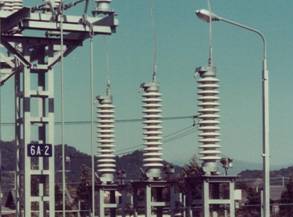 In 1975 Meidensha became the first company to introduce a high voltage MOV type arrester. The units were
installed on a 66kV system and put into service at the Hayato substation of Kyushu Electric Power Co.
That success gave Japanese electric power companies prospects in developing highly reliable power systems and
promoted the development and application of the new gapless arrester.
In 1975 Meidensha became the first company to introduce a high voltage MOV type arrester. The units were
installed on a 66kV system and put into service at the Hayato substation of Kyushu Electric Power Co.
That success gave Japanese electric power companies prospects in developing highly reliable power systems and
promoted the development and application of the new gapless arrester.
Complete Hall of Fame Citation
Paper on the Development of the First HV MOV Type Arrester
August 2008
Dr.-ing. Karl-Heinz Weck
Expert in Insulation Coordination and IEC Standards Development
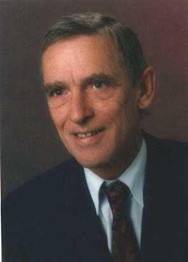 Dr. Weck has spent his entire career working to improve electrical power systems. His first efforts were as
an assistant professor at Darmstadt TU and then through his leadership at
FGH a German non-profit organization
dealing with power systems. His influence and expertise extends far beyond surge protection, but still his
influence in IEC arrester standards is unparalleled in Europe for the past 25 years.
Dr. Weck has spent his entire career working to improve electrical power systems. His first efforts were as
an assistant professor at Darmstadt TU and then through his leadership at
FGH a German non-profit organization
dealing with power systems. His influence and expertise extends far beyond surge protection, but still his
influence in IEC arrester standards is unparalleled in Europe for the past 25 years.
When Dr. Weck is in a standards meeting, there is no doubt that he is there. His input is substantial and
substantive. His big voice carries a lot of weight and is universally respected. He has been the lead delegate
of the IEC arrester technical committee for many many years and when there is a tough technical problem to
tackle, you will find him in the middle of it searching for the correct and equitable solution. When there is
a tough political problem to solve in standards, you will also find Dr. Weck leading the effort to resolve it.
Dr. Weck has retired from FGH recently but remains active in the power systems world as a consultant.
Dr. Weck's words of Wisdom
Although surge arresters represent one of the cheapest equipment in the power transmission and distribution
system, its application as an overvoltage protection device for expensive apparatus as power transformers
requires some of the most complex procedures in power engineering, called insulation co-ordination. For this
task the future engineer needs to know power system construction and operation as well as external influences
on the power system as lightning or pollution. Without these considerations an adequate overvoltage protection
by surge arresters cannot be achieved. I wish that future electrical engineers will develop the same passion
in this complex field as I always have myself.
Complete Hall of Fame Citation
July 2008
Dr. Michio Matsuoka
Inventor of Zinc Oxide Varistor
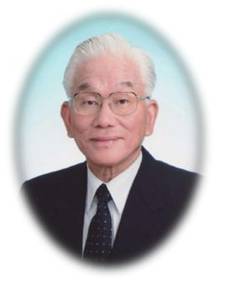 In July of 1967, at the Matsushita Electric Co. in Osaka Japan, a young physicist named Michio Matsuoka and his
team made a discovery that changed the surge protection world forever. The 30 year domination of SiC varistor
technology was about to end. The Zinc Oxide based varistor as we know it today was born.
In July of 1967, at the Matsushita Electric Co. in Osaka Japan, a young physicist named Michio Matsuoka and his
team made a discovery that changed the surge protection world forever. The 30 year domination of SiC varistor
technology was about to end. The Zinc Oxide based varistor as we know it today was born.
During the mid 1960's as the semiconductor industry produced lower and lower voltage devices, the need for
better surge protection became a necessity. In 1965, at 29 years of age, Michio Matsuoka was assigned the
task of finding the next generation of surge protection to meet the lower voltage requirements. A well thought
out plan of attack was prepared with Zinc Oxide as the choice of ceramic material to be used. By March of 1967,
the Zinc Oxide Varistor based on surface barrier properties had been developed and was ready for process
optimization. In July of that year, during this process optimization, an oven being used to process the new
surface barrier type ZnO varistor experienced a thermal-run-away. The resulting ZnO varistor had very
different properties. After what had to be an exciting investigation, they discovered that Bi and Mn contained
in the glass frit of the Ag paste had defused into the body of the ZnO and was responsible for these very
different properties. This was the moment of discovery of today's Zinc Oxide Varistor.
This was just the beginning of the ZnO development that has lead to varistors lower than 5 volts and as high
as 1.2 million volts.
Dr. Matsuoko's Hall of Fame Citation is here.
A paper on the Discovery of ZnO grain boundary phenomena
Brief Bio of Dr Matsuoka
June 2008
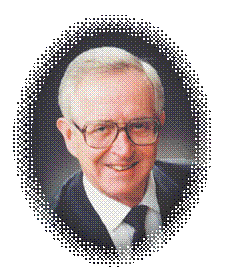 Bob Hileman, as he is known to most, is the author of the most comprehensive book on Insulation Coordination ever written.
His 766 page, 18 chapter masterpiece, is simply titled "Insulation Coordination for Power Systems." It is currently the most
often referenced book on this important subject in the overvoltage protection world.
Bob Hileman, as he is known to most, is the author of the most comprehensive book on Insulation Coordination ever written.
His 766 page, 18 chapter masterpiece, is simply titled "Insulation Coordination for Power Systems." It is currently the most
often referenced book on this important subject in the overvoltage protection world.
Before retirement in the early 2000s his presence at IEEE and IEC meetings was larger than life. His depth of knowledge in
power systems went well beyond insulation coordination. When he spoke in his unique raspy voice, he had everyone's undivided
attention. His comments and guidance in the business is among the best of the best. Even to this day, seldom does an insulation
coordination meeting go on without some reference to "What did Bob say in chapter so-and-so on this subject?" His contribution
to standards continues on.
Bob served on several IEC and IEEE committees during his career. He was a significant author of the IEEE Standard 1313.2. He was
a significant member of the Surge Protective Devices Committee. He served on the IEC committee that wrote 60071-1 and 60071-2.
Both documents related to insulation coordination.
Bob served as the Chair of IEEE Committee on Insulation Coordination. He was a fellow of the IEEE and an active member in CIGRE.
Prior to retirement Bob was a professional engineer in Pennsylvania, his home state. A 1951 BSEE Lehigh University graduate, a
1955 MSEE University of Pittsburgh graduate, and after leaving Westinghouse in 1989, a well known private consultant in the
electric power industry.
He spent over 40 years with the Westinghouse Electric Corporation where he specialized in the study of insulation coordination,
switching overvoltages, lightning phenomena, lightning protection, and high-voltage laboratory testing.
While at Westinghouse he was a co-developer of a new theory of the last step of the lightning stroke and discovered the
pre-discharge phenomena.
He attended the University of Berlin, Germany, in 1966/67 on a Lamme Fellowship to study high voltage phenomena. He was at
the forefront of the development of EHV transmission systems and supervised analytical and field test programs for the initial
industry 345kV and 765kV projects.
Bob authored more than 50 technical papers, a lecturer in the graduate schools of several universities, and the recipient of
numerous awards and honors in the electric power field.
 As a lecturer for the Penn State Advanced Power Engineering Program, Bob taught students from all over the world.
As a lecturer for the Penn State Advanced Power Engineering Program, Bob taught students from all over the world.
Bob's reputation and contribution to the surge protection industry is inarguably "World Class" which makes him a prominent and
deserving member of the Surge Protection Hall of Fame.
Bob is living quietly in Monroeville PA with his lifelong wife Becky. He and Becky have three daughters Judy, Linda and Nancy.
Bob's Hall of Fame Citation is here.
May 2008
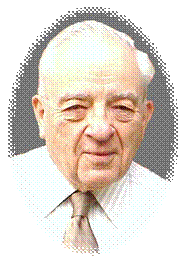 Joe Koepfinger is a 60 year member of IEEE and a 53 year member of the Surge Protective Devices Committee. Anyone who has the
honor of knowing Joe would agree that there are few people more dedicated or influential in the development of standards than he.
Joe Koepfinger is a 60 year member of IEEE and a 53 year member of the Surge Protective Devices Committee. Anyone who has the
honor of knowing Joe would agree that there are few people more dedicated or influential in the development of standards than he.
The focus of his participation in the surge protection world has been in writing and managing IEEE and IEC standards. At 80+,
Joe is still the go-to-guy when a clarification of how to handle a standard strategy or for a check of its sanity factor.
Joe was kind enough to write a history of his IEEE and IEC activities. It is not only his history, but it is the history of the
SPD committee in some sense. Joe started in the power business working as a Jr. Engineer for the Duquesne Light Co in the
Pittsburgh Pa area in 1949 after graduating from the University of Pittsburgh that year. His affiliation with IEEE or AIEE as
it was called then started while he was a student. He has served in almost every capacity in IEEE standards that one could serve.
He has received many awards over the years with one his proudest accomplishments being the recipient of the IEEE PES Steinmetz
Award for his activities in standard work.
Koepfinger Words of Wisdom
There is no job that one cannot like. Make it a point to find some challenge and good in every job you have. Always try to leave
something of value for the future behind as you move on. Always, always look forward, never look back....
Joe's extraordinary bio is found here. As you read through it, you will realize that you are reading about an obviously
indefatigable person, which we all know is the case.
One point that Joe leaves out in his story about him and his standards career is the fact that he I served in WW II and was
involved in combat in Belgium, Netherland and Germany as a First Scout in K Co, 3rd Battalion, 415th Regiment, 104 Infantry
Division. That's a whole different story I'm sure.
One other very important point to make is that Joe is seldom seen at meetings without Genevieve nearby, his companion of 52
years. I'm sure that Joe would agree that without her never ending support he could not have been so successful in his career.

April 2008
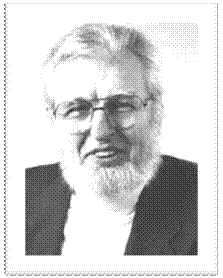 François Martzloff has more than 50 years experience in engineering with 40 of it in the surge protection industry.
He is perhaps the most prolific author in this industry for the past 50 years, and perhaps for all 150 years of this business.
There was a rumor a few years back that said François had retired, but it is not obvious by his action. Even as I was gathering
this information from him, he was in the middle of an email-flurry on a surge subject with colleagues from the Surge Protective
Devices Committee (SPD).
François Martzloff has more than 50 years experience in engineering with 40 of it in the surge protection industry.
He is perhaps the most prolific author in this industry for the past 50 years, and perhaps for all 150 years of this business.
There was a rumor a few years back that said François had retired, but it is not obvious by his action. Even as I was gathering
this information from him, he was in the middle of an email-flurry on a surge subject with colleagues from the Surge Protective
Devices Committee (SPD).
When asked to offer words of wisdom for those that follow us in this business, he offered these:
Guidance #1
After concluding your own experiment, or reading someone's else, before drawing any conclusion, always apply the criterion:
"Does it really make sense?"
Guidance #2
Never, never -- or hardly ever, -- take NO! for an answer, even the second time. However, be aware that the world has two
different definitions when reviewing the same initiative: if finally accepted, you have been perseverant; if still rejected,
you are merely obstinate, period.
Full Article
For a much greater look at the works of François Martzloff, visit his site at
SPD Anthology maintained by the US National
Institute of Standards and Technology. You can view his popular brochure titled
"Surges Happen" on the NIST site.